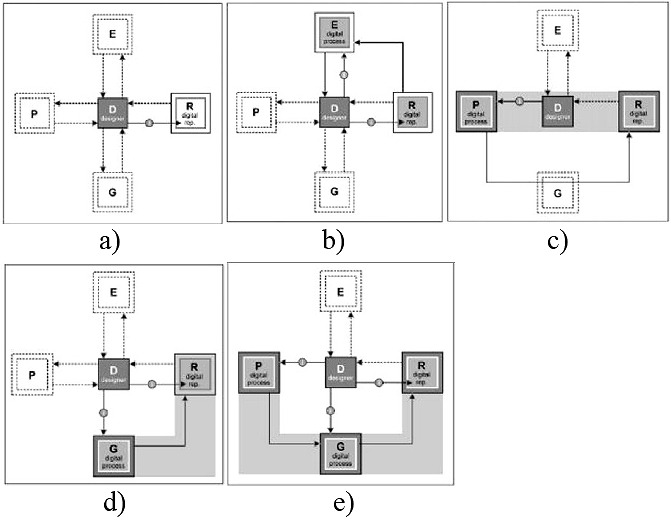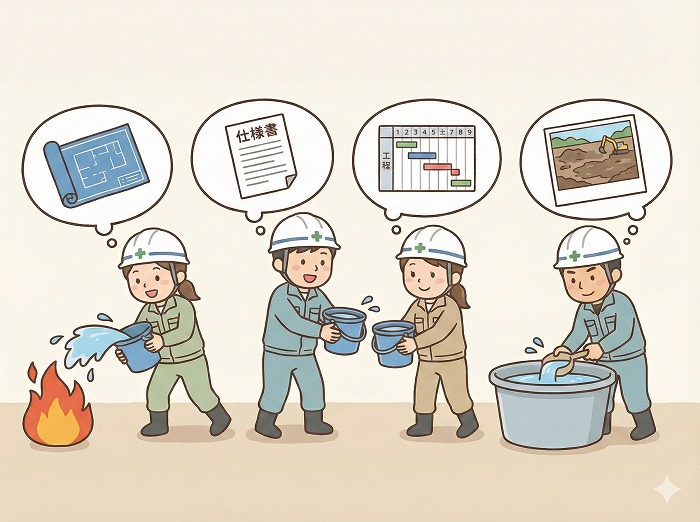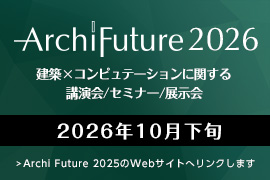![]()
スマートシティと都市シミュレーションゲーム
2024.09.18
パラメトリック・ボイス
東京大学 ケント・リー
東京大学豊田研究室特任研究員のLee Kentと申します。研究室のメンバーが執筆する連載コラ
ムの第9回を担当します(これまでのパートは次の通り: 第1回、第2回、第3回、第4回、
第5回、第6回、第7回、第8回)。前回の記事では、ゲームエンジンがスマートシティの実装に
不可欠な強力なツールボックスであることを説明しました。今回は、ビデオゲームでどのよう
に都市がシミュレートされ、それがスマートシティの実装にどのように関係しているかについ
て述べます。
スマートシティは、市民の生活の質を向上させるためにデータと最新技術を利用し、市民の意
思決定、緊急対応プロトコル、経済および持続可能な開発計画などを促進します。この記事で
は、インフラと都市システムに焦点を当てます。例えば、ビデオゲームは都市のインフラやメ
カニズムをどのように表現しているのでしょうか。ビデオゲームのデザイナーは、これらのシ
ステムをコントロールし、現実世界のどの側面をゲーム世界で再現するのかを選択し、ゲーム
体験の楽しさと、ゲームにプレイヤーを夢中にさせることを追求しています。具体的なビデオ
ゲームの例を紹介しましょう。この記事を書き始めた当初は複数のゲームについて取り上げる
つもりでしたが、『Cities: Skylines』シリーズのブログ記事に都市シミュレーションゲームの
全容をとらえるのに十分な内容がまとめられていました!
『Cities: Skylines II』では、プレイヤーが都市計画家/独裁者/神の視点で、土地と都市を意
のままに形作ることができます。このゲームは、都市を建設し、監視し、最適化するためのイ
ンターフェースを提供しています。ゲームの核となるのは、都市のリアルタイム・シミュレー
ションで、住宅、雇用、商業、公害、健康、ゴミ収集、下水、降雨などがモデル化されていま
す。すべてのモデルは高度に抽象化・難読化されており、プレイヤーが変更できるオプション
はほとんどありません。これはゲーム的には理にかなっていますが、意思決定者にとっては現
実を反映していないとも捉えられます。

Cities: Skylines II:分析形態、ゾーニングされた住宅地(左)配電網(右)
都市シミュレーションでは、それぞれ異なるニーズと目的を持つエージェントを無制限に配置
することができ、システムをよりダイナミックでリアリティのあるものにすることができます。
それぞれのエージェントをパーソナルエージェンシー(個人を表現する特定のプロファイル)
を持つ個人としてモデル化することで、シミュレーションは計算負荷を効率的に分散し、都市
活動の複雑さをよりよく反映することができます。例えば、10代の若者は最も安い交通手段を
優先し、通勤者は最速ルートを求め、高齢者は最も快適な選択肢を好むなど、年齢層の違いが
旅行の嗜好に影響します。このエージェントベースのアプローチは、都市内の多様な行動や相
互作用のシミュレーションの精度を高めることができます。
また、都市計画という複雑なテーマへの市民の関与を促進する手段として、ゲーミフィケー
ションを推奨する議論もあります*1。しかし、これは効果的な都市計画の代用品でもモデルで
もありません*2。プレイヤーは、あらかじめ確立されたルールやシステム、そしてそれらに埋
め込まれた固有のバイアスの中で活動しており、システム的で根本的な、真に意味のある変化
をもたらすことはできません。ゲームエンジンは優れたツールではありますが、スマートシティ
用デジタルツインの創造は、都市シミュレーションのゲームジャンルよりも、より目的意識が
高く、オープンなものでなければならなりません。
と、述べたところで、次のような面白い話もあったので紹介します:
• ゲーム内で機能的な反資本主義都市の建設に失敗した*3
• バーチャル家主は、持続不可能な生活費高騰の元凶であるため、開発者によって排除され
る必要がありました*4
• ゲーム内で電卓を作ることができる(ゲーム内の汚水で動作、ただし計算が非常に遅い)*5
• (おまけ;Cities: Skylines以外の都市シミュレーションゲームの話)ポーランドの
ワルシャワの選挙で市長候補がSim Cityで対戦、勝者は最終的にポーランドの大統領に
なった*6
結論から言えば、ゲームは楽しむために設計されているため、スマートシティでの有用性は限
定的です。インフラストラクチャーのシミュレーションは単純化されており、どのように影響
を与えられるかという制約が厳しいため、理解はしやすい。しかし、エージェントベースモデ
ルは都市のダイナミズムを表現するための優れたフレームワークであり、スマートシティ・デ
ジタルツインを設計する際には、ゲームで使われている最適化やデータ構造を参考にするべき
です。こうした簡略化された表現は、都市計画への障壁を下げ、市民を巻き込むユニークな方
法を提供するのに役立ちます。ただし、こうした抽象的な表現の限界を明確に伝え、重要な意
思決定の根拠として使われないような注意は必要です。
References
*1 P. Cureton and P. Coulton, ‘Game Based Worldbuilding: Planning, Models,
Simulations and Digital Twins’, AL, vol. 7, no. 1, pp. 18–36, 2024, doi: 10.34135/actaludologica.2024-7-1.18-36.
*2 Federica Buzzi, ‘Gamespace Urbanism: City-Building Games and Radical
Simulations’, Failed Architecture. Accessed: Sep. 04, 2024.
*3 Finn Williams, ‘The Guardian Cities: Skylines challenge – can I build a truly
anti-capitalist city?’, The Guardian. Accessed: Sep. 04, 2024.
*4 Megan Farokhmanesh, ‘Cities: Skylines II Found a Solution for High Rents:
Get Rid of Landlords’, Wired. Accessed: Sep. 04, 2024.
*5 Daniel Bali, ‘Cities: Skylines is Turing Complete’, Medium.
*6 ‘In 2002, Warsaw’s mayoral candidates all competed in a game of SimCity –
and the future president won’, CityMonitor.
以下、上記のコラムを英文でも掲載します。
Smart City and City Simulation Games
The University of Tokyo Lee Kent
I’m Lee Kent, a researcher at the Toyoda Lab at the University of Tokyo. This is
part 9 of a series of columns authored by members of the Toyoda Lab. The previous
posts can be found here: Part 1, Part 2, Part 3, Part 4, Part 5, Part 6, Part 7, Part 8.
In my previous article, I discussed how game engines are a powerful toolbox,
integral to smart city implementations. In this article, I would like to discuss how
cities are simulated in video games and how this relates to Smart City
implementations.
A smart city uses data and modern technologies to increase the quality of life of its
citizens and will facilitate civic decision-making, emergency response protocols,
economic and sustainable development plans etc. In this article, I will focus on
Infrastructure and City Systems. For example, how do video games represent the
infrastructure and the mechanisms of the city? Video game designers control these
systems, choosing the facets of the real world to emulate in the pursuit of fun and
engagement. Initially, I intended to discuss multiple games, but the Cities Skylines
game series provided sufficient content for a blog post!
The city-building series Cities Skylines allows gamers to take the role of an Urban
Planner/Dictator/God, shaping the land and the city to your will. The game provides
an interface to build, monitor and optimise your city. The game's core is its real-time
simulation of the city, modelling housing, employment, commerce, pollution, health,
garbage collection, sewage, rainfall etc. All of the models are heavily abstracted and
obfuscated, and they usually only provide a player with few options in which to make
changes. This makes sense from a gaming standpoint but does not reflect the reality
for decision-makers.

Cities Skylines II: Forms of analysis, zoning residential areas (left)
power distribution network (right)
A city simulation can host an unlimited number of agents, each with distinct needs
and objectives, making the system more dynamic and realistic. By modelling agents
as individuals with personal agency, the simulation distributes computational loads
efficiently while better reflecting the complexity of urban activities. For instance,
different age groups influence travel preferences: teenagers may prioritize the
cheapest transportation, commuters seek the fastest routes, while seniors prefer
the most comfortable options. This agent-based approach enhances the accuracy of
simulating diverse behaviours and interactions within the city.
There is also an argument to be made for gamification as a means to facilitate
citizen engagement with the complex topic of city planning *1. However, this is
neither a substitute nor a model for effective city planning *2. Players are operating
within the pre-established rules and systems and the inherent bias embedded into
those, and are unable to pose systemic, radical, truly meaningful changes. This
fundamentally limits the value opportunity, and whilst game engines are an excellent
tool, the creation of smart city digital twins must remain more purposeful and open
than offered by the city simulation genre.
That said, I found some fun stories I want to share:
• Failed attempts to build a functional anti-capitalist city *3
• Virtual landlords needed to be removed by developers due to being the source of
unsustainable rising living costs *4
• You can build a calculator in the game (but it is very slow and powered by sewage
waste) *5
• (bonus) There was a competitive SimCity game played by mayoral candidates for
an election in Warsaw, Poland, with the winner eventually becoming the president
of Poland *6!
In conclusion, games are designed for fun, meaning their utility for smart cities is
limited. The infrastructure simulations are simplified and tightly constrained in how
they can be influenced, so they are easy to understand. However, agent-based
models are an excellent framework in which to represent a city's dynamism, and the
optimisation and data structures used in games should be referenced when designing
a Smart City Digital Twin. These simplified representations can help lower the barrier
to urban planning, offering a unique way to engage citizens. Nevertheless, the
limitations of these abstractions must be clearly communicated, ensuring they are
not used as a basis for critical decision-making.
ケント・リー 氏 東京大学生産技術研究所 特任研究員



























